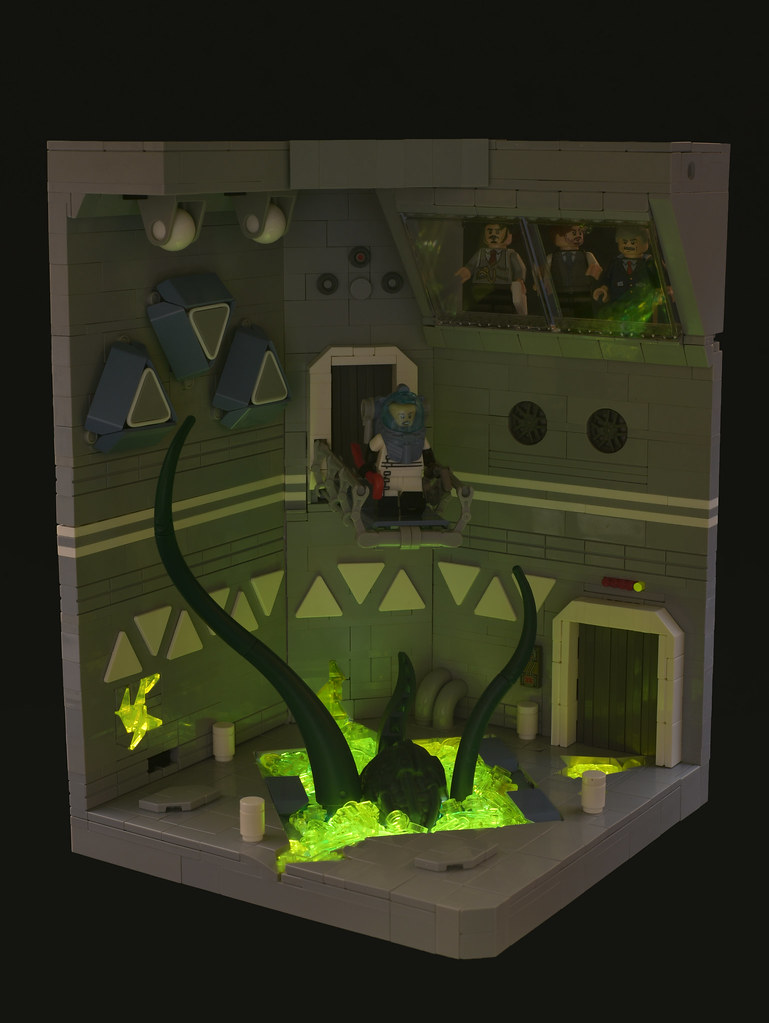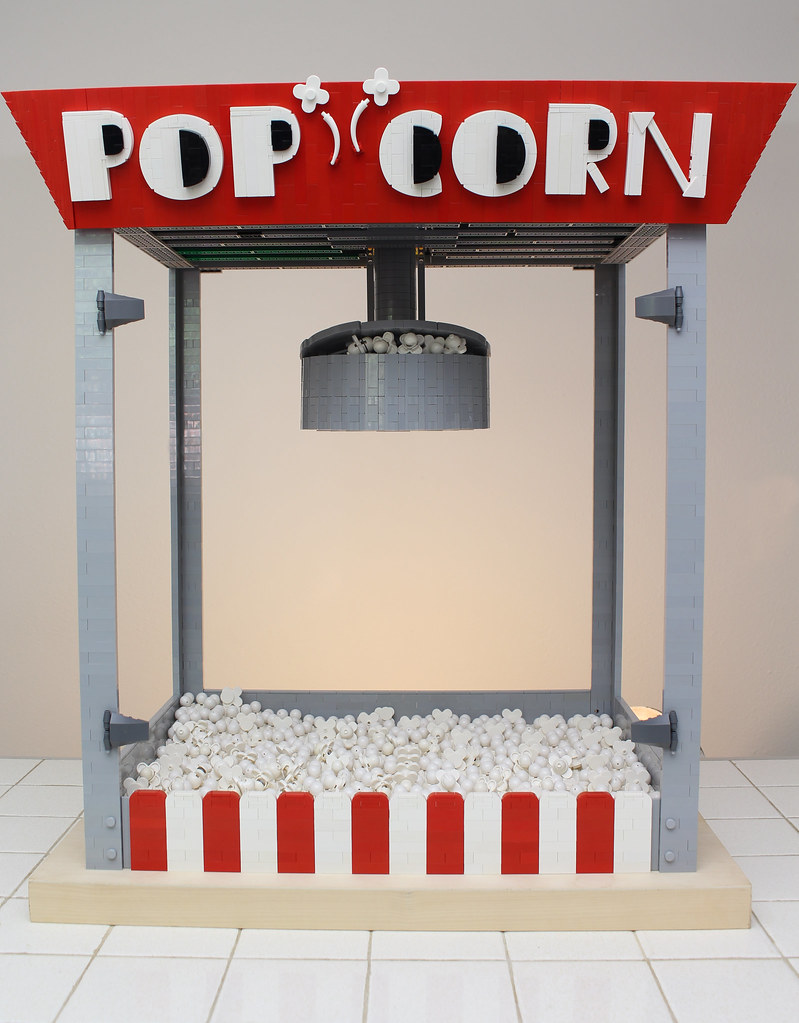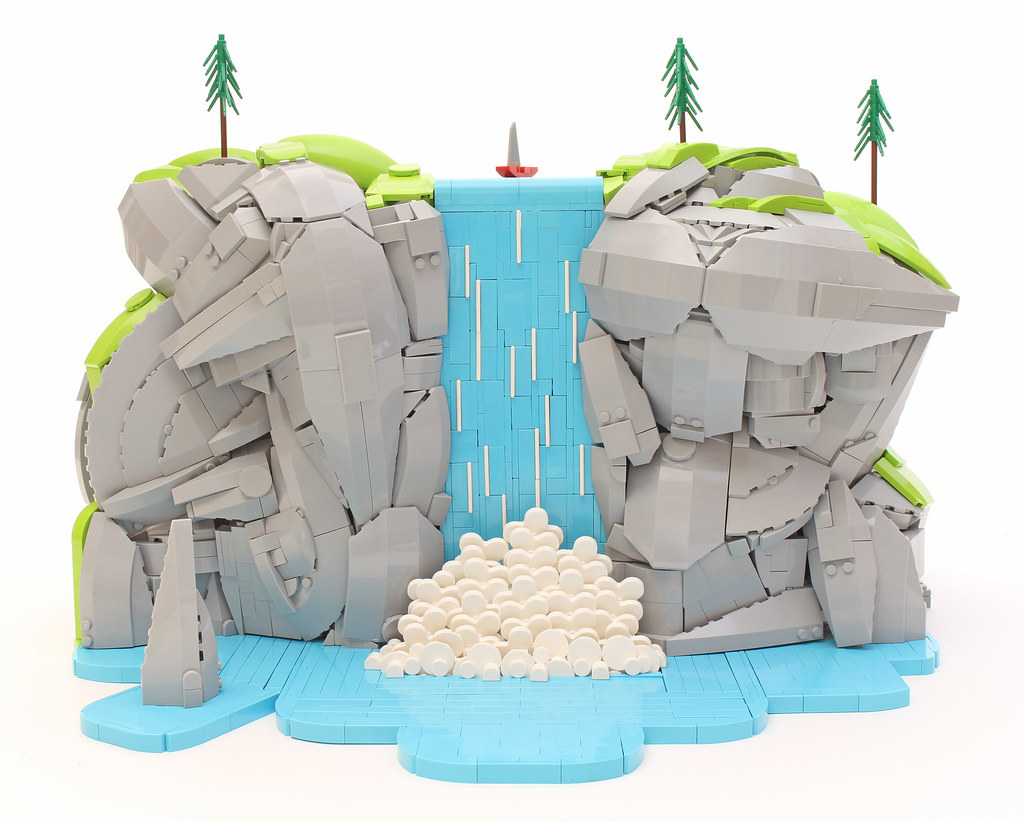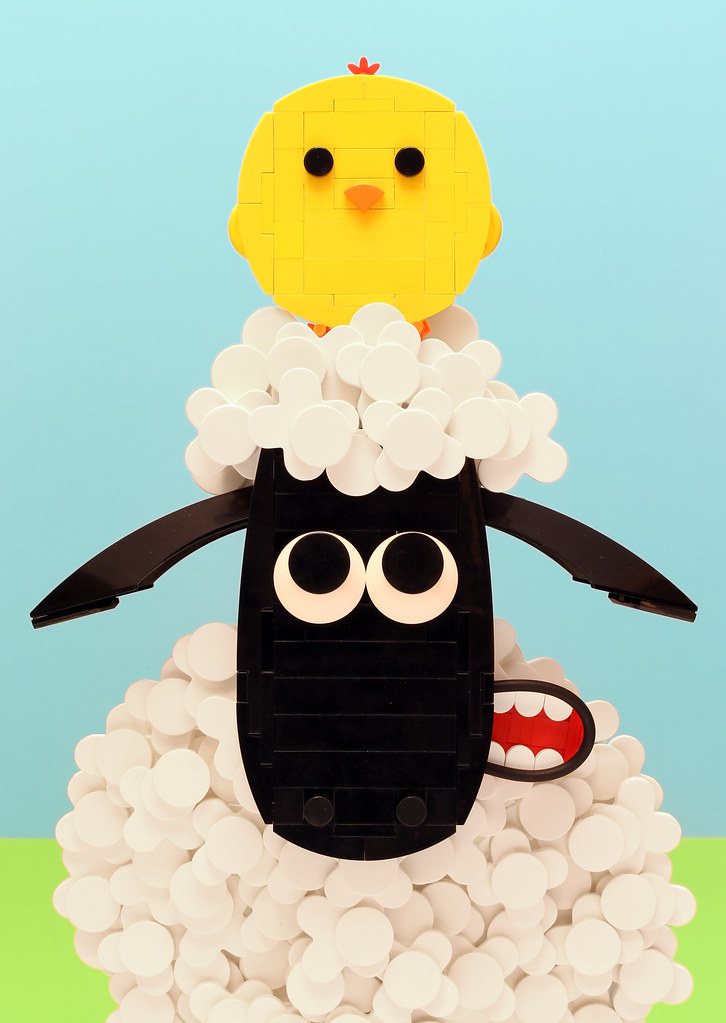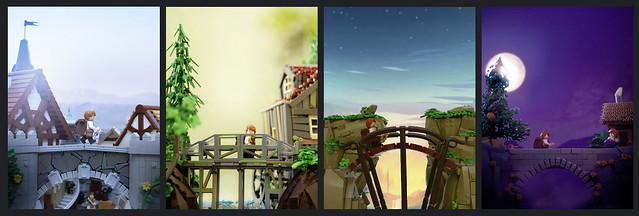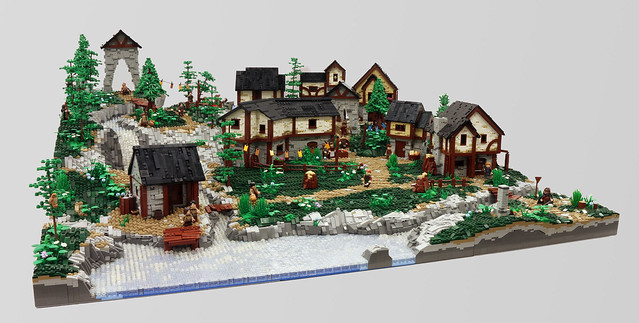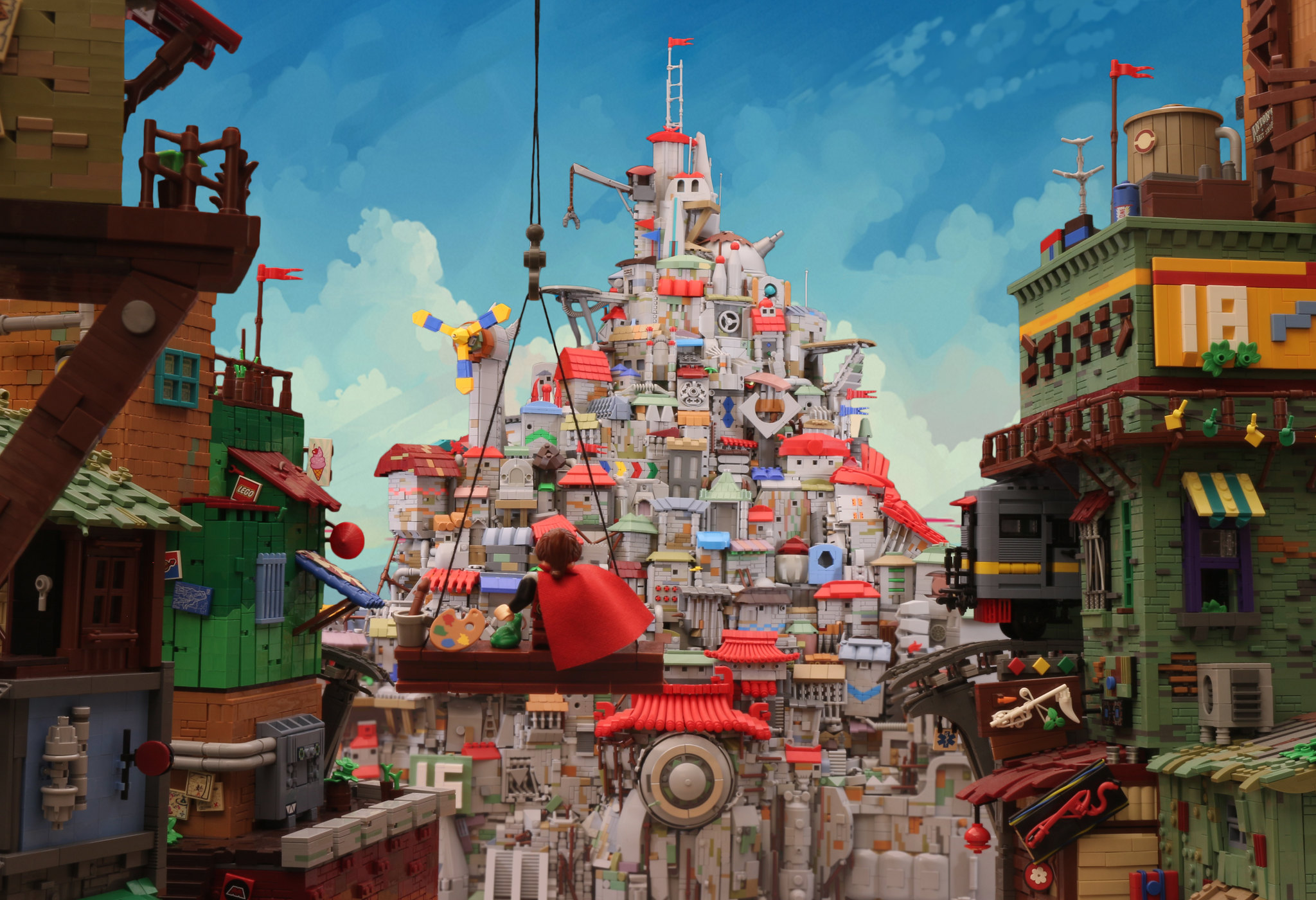There was a time when LEGO builder Grant Davis was a regular here at The Brothers Brick but lately he’s been as rare as truck nuts on a Prius. That’s because he’s been away at the university. But that’s all about to change because he is competing in the ever-popular Iron Builder competition against our friend and recent TBB alumni Benjamin Stenlund. Grant calls this one “The Experiment” and, like many sci-fi movies and Florida Man stories, it features toxic goo, tentacles, and a situation that’s about to get calamitous. This is only his first entry in this competition so we can expect to see plenty more from Grant and even Benjamin soon. Iron Builder always means job security for us. Speaking of job security for us, check out the other times we were totally gaga for Grant’s stuff.
Tag Archives: Grant Davis
Just add butter and a good movie
Things are getting a little ridiculous here. The level of Grant Davis‘ genius LEGO skills lately is making me want to be better at life. Making a popcorn machine is neat, but what’s really cool is that it functions. Yup, the “popcorn” pieces come out of it just like the real thing, using a motorized piston at the top. It’s an excellent idea that I wish I would have thought of myself. But on top of that, we have to address the font. Can you imagine a better way to replicate that old school cartoony movie theater style?
If you look closely, you can see the piston moving up and down. It “pop” out just the right amount at the right timing to mimic the real thing.
You can see all of Grant’s LEGO builds (including many with a common parts theme) in our archives.
Do go chasing waterfalls
Ah, nature. It feels great to get out of the house and stretch the legs, hiking strenuously over hill and dale to find the perfect vista by a babbling brook to soothe the troubled soul. Or, you could save yourself the strenuous part and just look at this beautiful waterfall built by Grant Davis, like me. From the smooth rock, comprised of larger elements not often seen in LEGO cliffs, and the hint of greenery at the top, all the way down to the sparkling blue pool and perfectly captured foam, it is a satisfying blend of the complexity of technique and simplification of texture and hue. While I do not envy the folks in that unfortunate boat at the top of the falls, I can at least reassure them that they are just falling into a pile of flowers.
If you love builds of waterfalls, check out the TBB archives of waterfall builds. Or if you just can’t get enough of Grant (and who can?), here are some more of his builds.
Not your grandma’s lace tablecloth
LEGO builder and co-fan-designer for the Ideas Pop-Up Book set, Grant Davis is on a roll lately. As in, one of the best runs of excellent builds in a short time I’ve ever seen. In this latest project, the candlestick holder and rose are lovely. But the real hero of the display is the “lace” tablecloth. Made up of 16 white nets and adorned with both older and new flower elements, it’s certainly convincing. Anyone who has worked with nets in this way knows how tricky and fiddly they can be, but these are expertly held together with carefully hidden connections. There are even white tusks/tails clipped to octagonal parabolic rings for the more intricate center. LEGO has never looked so delicate.
To see the rest of this excellent series of builds, check out Grant’s giant playing card, gingerbread house, renaissance man, and sheep.
This gingerbread house looks fingerlicking good
LEGO Builder Grant Davis has been having a lot of fun lately with the 4×4 flower part. Here he’s used it to decorate the roof of this Gingerbread House. But this isn’t the only smart usage of parts in this sweet treat. A gingerbread house is typically decorated by piping icing onto the gingerbread base, and Grant used all sorts of organically shaped white parts to mimic this. Among the parts he used are the egg, the candle and a lot of round, half-round and quarter-round tiles. The use of rubber bands beneath the eaves and for the X-shaped windows deserves a quick mention too. Did you spot the different types of helmets he used for candy?
So. Very. Fluffy.
I’m always delighted when a bright and colorful build comes across my path, and this latest work by Grant Davis is no exception. Inspired by the 4×4 flower element, this creation seems a lot softer than the underlying plastic construction should allow. In An Unidentified Fluffy Object (UFO), a visitor from the unknown perches atop a very Aardman-esque sheep. The fleece design is brilliant, but for me, the star of the show is that mouth. Flex tubing is used to create a very unusual shape for a LEGO creation, and clever photography gives it the perfect cartoon resolution. And, as an additional plus, that chick is just adorable.
This isn’t the first build we’ve featured from Grant featuring that 4×4 flower element. Check out our archives for even more seed-part goodness!
Wait a minute, Mr. Postman
What do you get when four of the most talented castle builders out there collaborate on a series of LEGO builds? It’s a bit like alchemy, because the result is solid gold. Well, Grant Davis, Simon Hundsbichler, Marcel V., and Markus Rollbühler teamed up to show the life of a postman, carrying the mail across every bridge in the realm to make sure each and every citizen receives their letters on time. Each build is different in every detail, except the postman himself, but they are all scaled and shot to mimic the others, with the result that the builds complement each other perfectly. I’d love to have these framed on my wall, side by side, because these are not just LEGO builds, but art.
Click to see each of the builds up close
Now that’s a Renaissance man
There is just something about this mustachioed fellow’s gaze that is utterly captivating. Perhaps it’s the twinkle of 17th century worldly knowledge in his eyes, or it’s the amazing part usage that went into the face detailing as well as the costume of this LEGO bust built by Grant Davis.
The eyebrows of this piece are each cleverly composed of two reddish brown claw pieces, while the mustache is ingeniously constructed of two tail pieces with technic pin endings clipped to a reddish brown minifigure epaulette. Perhaps the main focal point of this build is the elegant white “ruff” or millstone collar made out of 4×4 flower pieces with rounded petals and 4×2 wedge elements. The studs on the wedges add some texture to the notably ruffled piece of neckwear. It is hard to pick my favorite use of parts here, I also quite enjoy the hat and its use of rounded-bottom 2x2s. Davis’s bust is both cleverly fashioned and true to its subject – the renaissance nobleman in its depiction.
In the court of the crimson king
LEGO builder Grant Davis demonstrates quite a few tricks with this massive King of Diamonds playing card. The seed part is a white 4×4 flower. He incorporates twenty-one of those mamma-jammas into the intricate design of this card. Also expertly woven into the design is yellow ribbed hoses and a myriad of parts situated in complex angles. Grant doesn’t provide size dimensions in his write-up but based on the bricks that we can see, we estimate this feat of artistry is nearly three feet high! Now let’s hope he’ll also build fifty-one of his closest friends to complete the deck. Until then, you may want to settle in and check out some of the other stuff Grant has built.
What does it take to be human?
This out-of-this-worldly LEGO creation entitled “Trying to be human” by Grant Davis is a mechanical humanoid meditating and presumably figuring out what makes us all tick. What’s the lure of being a human when you can process googol calculations in a second and perhaps never die? It seems way more interesting than a fragile human life that ends so easily. My take is, if a non-human entity is able to figure out and become more human-like, I’d say we’re in big trouble!
It takes a village to make a village
I’ve recently started being interested in the idea of collaborative LEGO builds. Everyone does their part and they all come together to create an amazing piece of art. Such is the case with The Village of Thornefeld a terrific medieval village collaboration from Cole Blood, Timothy Shortell, Grant Davis, Eli Willsea, James Libby and Jake Hansen.
I had the pleasure of seeing this model in person at Bricks Cascade. Photographs can never quite capture the grandness of these large creations, but it was joy to see up close. What’s incredible about this build, besides it’s huge size and masterful execution, is the cohesiveness of the whole thing. Each builder worked within a tight color scheme and used matching rock styles to make all the sections mesh seamlessly. I love the way the ground slopes slowly upward, creating a wonderful rolling landscape and various levels. This is great territory for storytelling which each builder does nicely, creating a bustling village that’s full of life.
TBB cover photo for February 2020: Taking in the sights
From the incredible detail to the creative forced perspective execution, this build from collaborative team Grant Davis, Eli Willsea, and Micah Beideman, does not disappoint. With every glance, you’ll notice something new (oooh, look at that AC unit and that awning made of 1×1 cones), which is one of the many reasons we chose it for our February cover photo. Read our original article to see how this trio used LEGO to bring a painting to life.
Want to see your own LEGO creation featured across TBB social media for a month? Then read the submission guidelines and submit your photo today. Photos that do not meet the submission guidelines will not be considered, and will be removed from the group.
Keep up with The Brothers Brick by liking us on Facebook and following us on Twitter or Pinterest. And for extra goodies, follow us on Instagram, Flickr, or subscribe to us on YouTube.
